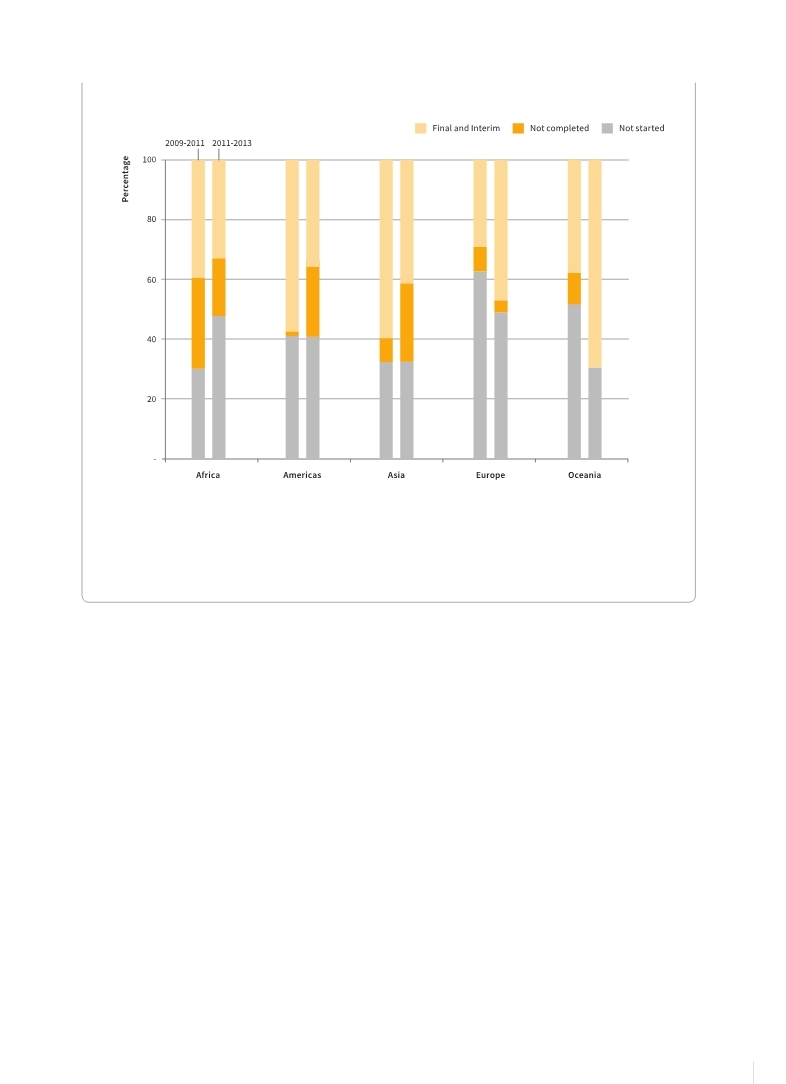 |
Global Assessment Report on Disaster Risk Reduction 2013
From Shared Risk to Shared Value: the Business Case for Disaster Risk Reduction |
 |
Global Assessment Report on Disaster Risk Reduction 2013
From Shared Risk to Shared Value: the Business Case for Disaster Risk Reduction |
|
|

 |

212 Part III - Chapter 14
tions, these institutional and legislative systems have remained focused on disaster preparedness and response, including through improved planning, training and capacity building. This has contributed to declining mortality risk in many countries, at least in weather-related disasters (UNISDR, 2007
UNISDR. 2007.,Hyogo Framework for Action 2005-2015. Building the Resilience of Nations and Communities to Disasters., Extract from the final report of the World Conference on Disaster Reduction (A/CONF.206/6). United Nations International Strategy for Disaster Reduction., Geneva,Switzerland: UNISDR.. . UNISDR. 2009.,Global Assessment Report on Disaster Risk Reduction: Risk and poverty in a changing climate., United Nations International Strategy for Disaster Reduction., Geneva,Switzerland: UNISDR.. . UNISDR. 2011.,Global Assessment Report on Disaster Risk Reduction: Revealing Risk, Redefining Development., United Nations International Strategy for Disaster Reduction., Geneva,Switzerland: UNISDR.. . Several countries have progressed in passing legislation and policy that attempts to integrate disaster risk considerations into sector strategies and wider planning. For example, a policy framework for reducing disaster risk has been incorporated in the National Development Plan 2011–2013 of the State of Palestine and integrated in the sectoral plans and strategies of the agriculture, health and security sectors. Some countries also highlight the success
of integrating disaster risk reduction into broader frameworks; examples include Burkina Faso in its Strategy for Accelerated Growth and Development; Ethiopia and its Growth and Transformation Plan; Rwanda in its Vision 2020; and Bangladesh in its Perspective Plan 2012–2021, which ties together all investment plans for the Government of Bangladesh.
Countries have been less successful, however, in making substantial inroads to achieving risk-sensitive investment. Papua New Guinea cites the existing Disaster Management Act and Disaster Management Plans as providing legislative and regulatory provisions for disaster management in the country, but recognises that these need updating to reflect a shift in government policy from emergency re-
(Source: UNISDR, based on HFA Monitor data)
Figure 14.2 Breakdown of percentage of countries reporting by regioniv
(Source: UNISDR)
Unless cited otherwise, all country-specific information in this chapter is based on the quantitative and qualitative analysis of the final or interim national HFA progress reports that countries have voluntarily submitted in the 2011–2013 cycle (as of March 2013). A more in-depth analysis is available in Annex 3 of the online version of this report and all national reports are available on Preventionweb.
|



 |
